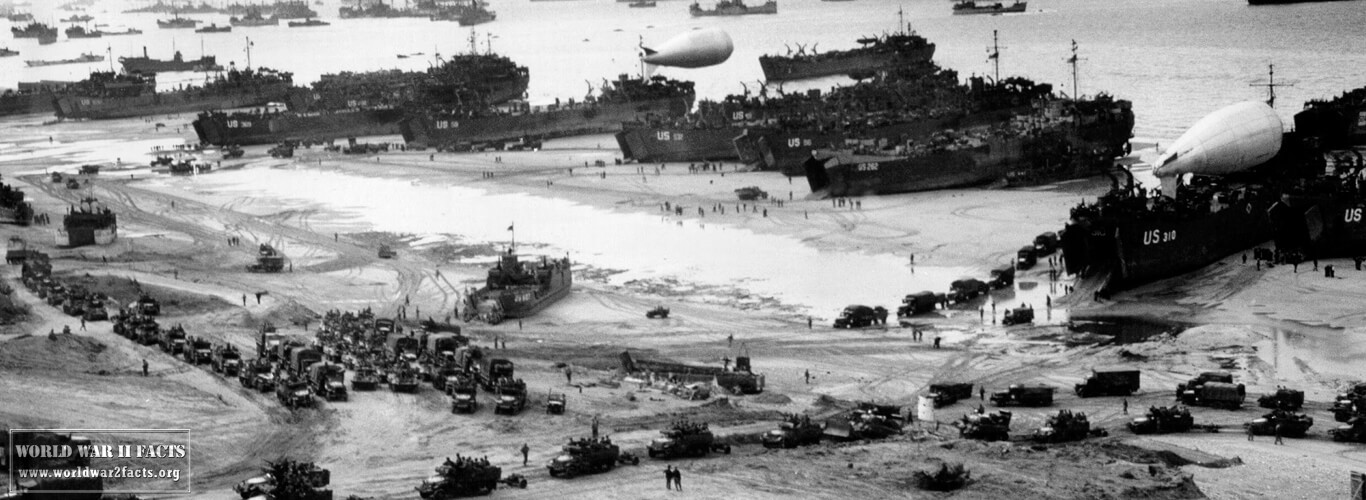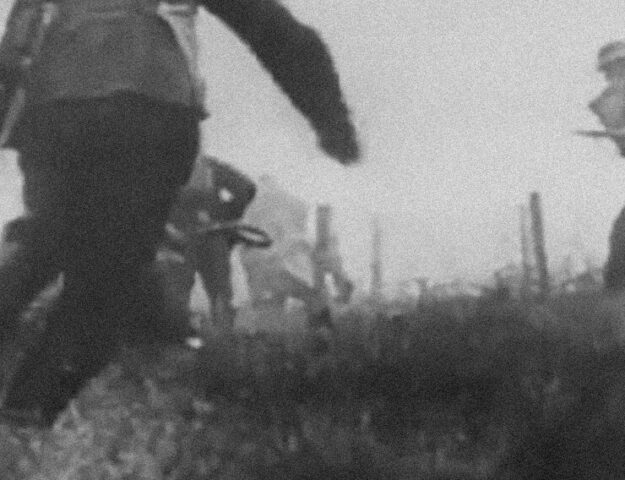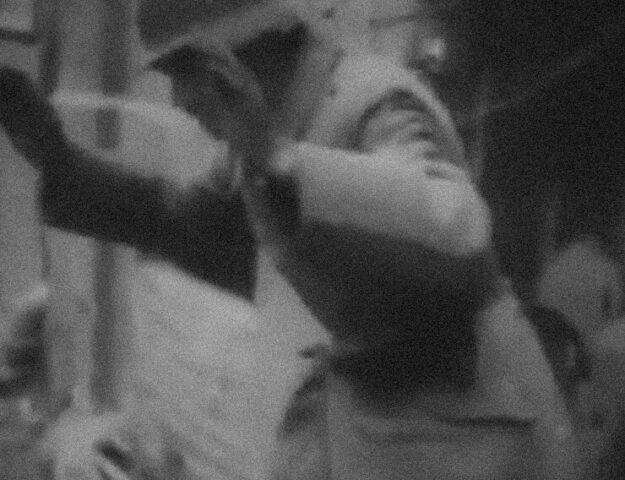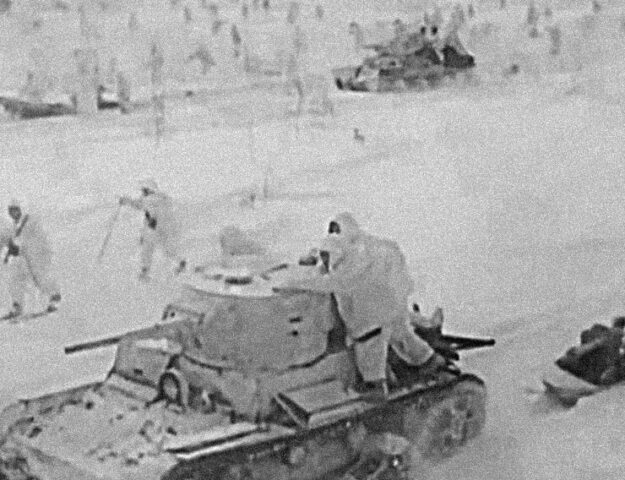Battle of the Philippine Sea Facts

The Battle of the Philippine Sea was a result of the American invasion of Saipan, the Japanese saw it as an opportunity to attack the American fleet as it was protecting the landing of their troops onto the island. It was an aircraft carrier battle between the Fifth Fleet of the U.S. Navy and the Japanese Combined fleet and some support from Japanese islands.
Japanese Admiral Mineichi Koga thought that it was time that the Japanese start their own offensive in the Pacific but the Japanese just couldn’t train pilots fast and well enough to counter the American war machine and soon Americans started attacking their land bases.
When Did the Battle of the Philippine Sea Occur?
Contents
- When Did the Battle of the Philippine Sea Occur?
- Battle of the Philippine Sea Commanders
- Philippine Sea Order of Battle
- Battle of the Philippine Sea Losses
- Battle of the Philippine Sea Map
- Battle of the Philippine Sea Video
- Battle of the Philippine Sea Summary
- Battle of the Philippine Sea Conclusions
- The Great Marianas Turkey Shoot Video
- Battle of the Philippine Sea References
The Battle of the Philippine Sea took place between June 19th and June 20th, 1944. The battle was a decisive naval battle that took place during World War 2 which resulted in the elimination of Japanese Imperial Navy’s ability to conduct large-scale aircraft carrier operations against the Allied Forces.
Battle of the Philippine Sea Commanders
United States
Raymond A. Spruance
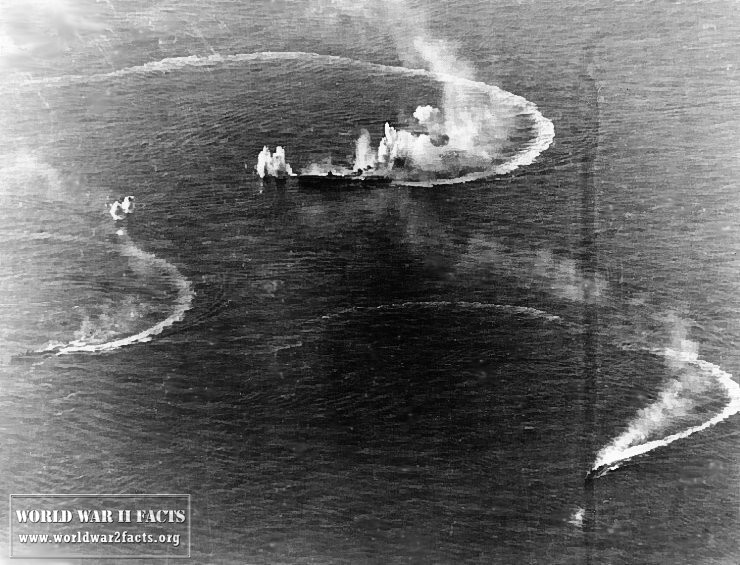
Marc A. Mitscher
Empire of Japan
Jisaburō Ozawa
Kakuji Kakuta
Philippine Sea Order of Battle
United States
7 fleet carriers
8 light carriers
7 battleships
79 other ships
28 submarines
956 aircraft
99,000 personnel
Empire of Japan
5 fleet carriers
4 light carriers
5 battleships
19 other ships
24 submarines
450 carrier-based aircraft
300 land-based aircraft
Battle of the Philippine Sea Losses
United States
123 aircraft destroyed
1 battleship damaged
Empire of Japan
3 fleet carriers sunk
2 oilers sunk
550–645 aircraft destroyed
6 other ships damaged
Battle of the Philippine Sea Map
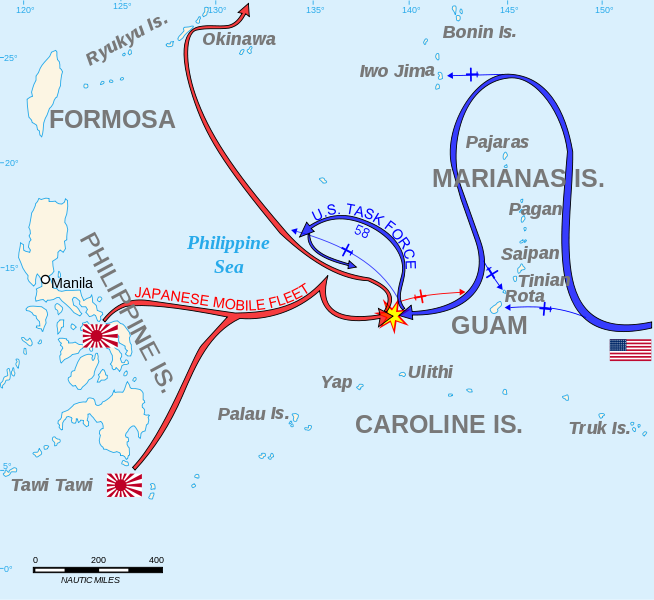
Battle of the Philippine Sea Video
Battle of the Philippine Sea Summary
The Japanese saw the American invasion of Saipan as the ideal opportunity to attack because they thought that their fleet would be pinned down while having to protect the transports and the troops already on the island. The Japanese had a disadvantage because they didn’t have as much air power as the Americans but because they had land based air forces on their islands they reasoned that it would be enough to prevail over the American fleet.
The biggest disadvantage for the Japanese had during the Battle of the Philippine Sea was that the Americans had recently started adopting new technologies, they had a lot of reinforcements and they had been developing new strategies for waging war and this proved to be far more effective than the Japanese thought. The Japanese on the other hand didn’t have the luxury of any new reinforcements or technology.
At this point the Japanese weren’t even considering that they could win the war, what they want is to inflict as many losses as they
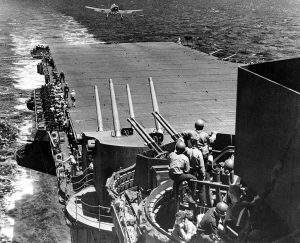
could so that the American public would demand stopping the war but because of the new technologies the Americans had adopted which resulted in lower losses of American lives their morale couldn’t be broken, on the contrary, they wanted to win the war more than ever.
The U.S. strategy during the Battle of the Philippine Sea was to conduct large scale attacks on supply chains that the Japanese needed to keep their war machine running. Perhaps an even bigger problem for the Japanese was, bigger than producing aircraft and ships fast enough, that they just didn’t have skillful pilots. Most of them were lost in the first two years of war between Japan and the U.S. Before the start of the war the Japanese focus was on training small numbers of highly trained pilots, so they weren’t ready to quickly train a lot of pilots to replace the losses they had suffered in war.
The Allies on the other hand had developed a system that systematically trained a lot of pilots by taking some of the experienced and skillful pilots from the war and letting them teach in the pilot schools. That way for each pilot “lost” from the front lines the Allies got dozens of skillful pilots, something that the Japanese couldn’t match.
Battle of the Philippine Sea Conclusions
Considering the many disadvantages the Japanese had it is only clear that the Battle of the Philippine Sea was just an indicator in what direction the war was going from this point on. At the end of the battle the Allies lost 123 aircraft while the Japanese lost 600 aircraft, 3 aircraft carriers and two oilers. The battle would go down in history as a decisive naval battle for the Allies. From this point in the war the Japanese couldn’t really use their aircraft carriers for anything more than simple decoys. The nickname the Americans have for this battle is just a testament to how decisive the American victory was over the Japanese fleet. The devastation that the Japanese suffered led one pilot to comment” Why, hell it was just like an old-time turkey shoot down home!” so the battle is sometimes called “The Great Marianas Turkey Shoot.”
The Great Marianas Turkey Shoot Video
Battle of the Philippine Sea References
Battle of the Philippine Sea, CV-6 USS Enterprise website, last accessed April 10th, 2013.
